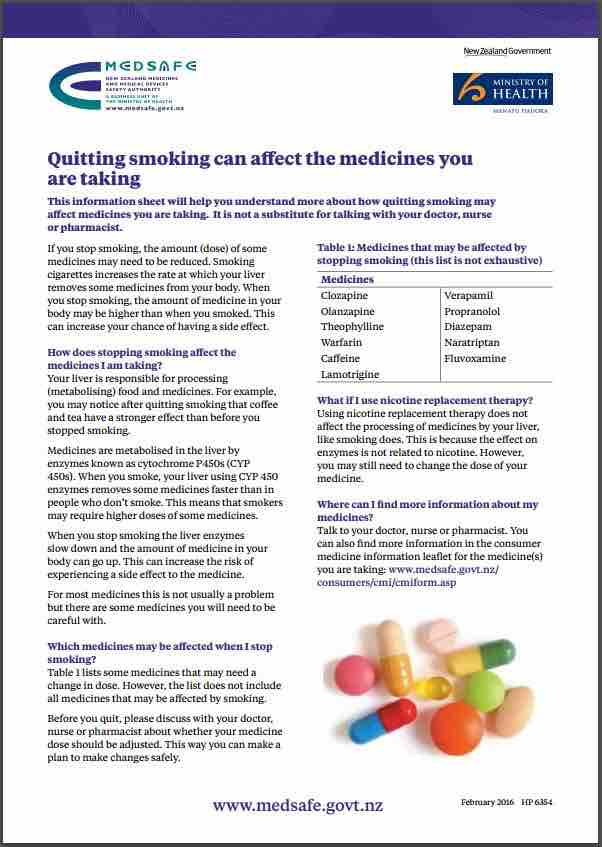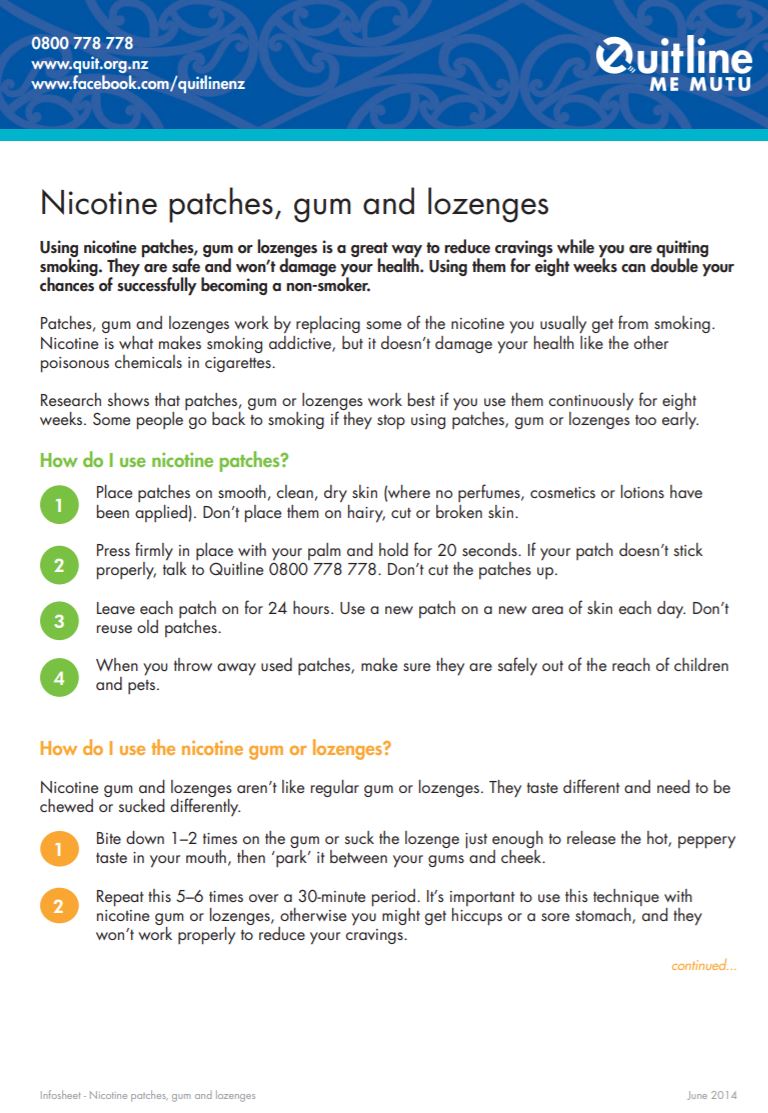Nicotine skin patch
Also called nicotine transdermal patch
Key points about nicotine patches
- A nicotine patch is a form of nicotine replacement therapy (NRT).
- It provides you with a low level of nicotine and reduces your urge to smoke and the withdrawal symptoms associated with stopping or reducing smoking.
- Find out how to use it safely and possible side effects.

A nicotine patch is a form of nicotine replacement therapy (NRT). This means that it provides you with a low level of nicotine and reduces your urge to smoke and the withdrawal symptoms associated with stopping or reducing smoking. Read more about nicotine replacement therapy (NRT).
Using 2 NRT products, eg, a combination of patches and either nicotine gum or lozenge, is more effective than using 1. It can take a while for the patch to start working, so using a faster-acting type of NRT (nicotine gum, mouth spray, lozenge or inhalator) helps to reduce cravings. Read more about which type of NRT is best for you.
The image below shows a nicotine patch on an upper arm, depending on the brand of nicotine patch you're using the product may be a different shape and/or colour.

Image credit: Canva
In Aotearoa New Zealand there are 2 brands of nicotine patches – Habitrol® and Nicorette®.
Habitrol is the funded brand, which means that it's available free or at a subsidised cost from your pharmacy ($5 for a 4 week supply, with the option of a free repeat). Learn more about how to get NRT.
Habitrol patches are available in different strengths (7 mg, 14 mg and 21 mg). When applied, the patch slowly releases nicotine over 24 hours through the skin.
Nicorette patches are available to buy from your pharmacy. They come in 3 strengths (10mg, 15mg and 25mg). These patches are applied for 16 hours each day and then removed.
The strength of the patch will depend on:
- the number of cigarettes you smoke a day
- how soon after waking in the morning you smoke
- if you are taking other NRT products.
Most people will need a lower strength patch as they get further into their quit programme. Your healthcare provider will advise you on the best dose for you.
If you're pregnant, you can still use the nicotine patch, it's safer than continuing to smoke, but it's best removed before bed. Talk to your lead maternity carer about the best options for you.
- Apply the patch once a day. Some patches stay on for 16 hours, some stay on for 24 hours.
- In the morning, put the patch onto dry, non-broken, non-hairy skin on your hip, trunk (main body), or upper arm.
- Hold the patch on for 10–20 seconds to make sure it sticks.
- Remove the old patch at bedtime if you're using the 16 hour patch, or in the morning if you're using the 24 hour patch. If you're pregnant, it's best to remove the patch before you go to sleep.
- Put the new patch on a different area in the morning. Avoid using the same site for several days.
- Dispose of used patches safely – fold the patch in half with the sticky sides together. Make sure you dispose of it out of the reach of children or animals.
Read more about the safe use of medicine patches.
Tips
- Don't tear or cut nicotine patches.
- Some procedures such as MRI scan may overheat the patch and burn the skin. Talk to your health care provider before your procedure.
- Avoid lotions or perfumes on areas where you stick your patch as it may mean the patch does not stick well.
- If the patch comes off, try sticking it back on with medical tape. Read more about the safe use of medicine patches.
Video: Nicotine replacement therapy – patches
(Te Whatu Ora | Health Promotion, NZ, 2024)
te reo Māori version(external link)
This video is also available with transcripts in Samoan and Tongan.
Video: Patches
(StartRightNRT, NZ, 2013)
Like all medicines, NRT can cause side effects, although not everyone gets them and serious side effects are very rare. Often side effects improve as your body gets used to the new medicine.
| Side effects | What should I do? |
|---|---|
|
|
|
|
|
|
Read more about medicines and side effects and reporting a reaction you think might be a side effect.
Nicorette® Nicotine 16 hr Invisipatch(external link) Nicorette NZ
Resources
Medsafe factsheet on quitting smoking can affect medicines(external link) Medsafe, NZ, 2016
Beat the smoking addiction(external link) Quitline, NZ, 2013
I quit smoking for baby and me(external link) Quitline, NZ, 2021
Nicotine, patches, gum and lozenges(external link) Quitline, NZ, 2014
5 questions to ask about your medications(external link) Health Quality and Safety Commission, NZ, 2019 English(external link), te reo Māori(external link)
References
- Nicotine(external link) NZ Formulary, 2022
- The New Zealand Guidelines for Helping People to Stop Smoking Update(external link) Ministry of Health, NZ, 2021
Brochures

Medsafe, NZ, 2016

Quitline, NZ, 2021

Quitline, NZ, 2014
Credits: Sandra Ponen, Pharmacist, Healthify He Puna Waiora. Healthify is brought to you by Health Navigator Charitable Trust.
Reviewed by: Angela Lambie, Pharmacist, Auckland
Last reviewed:
Page last updated:





